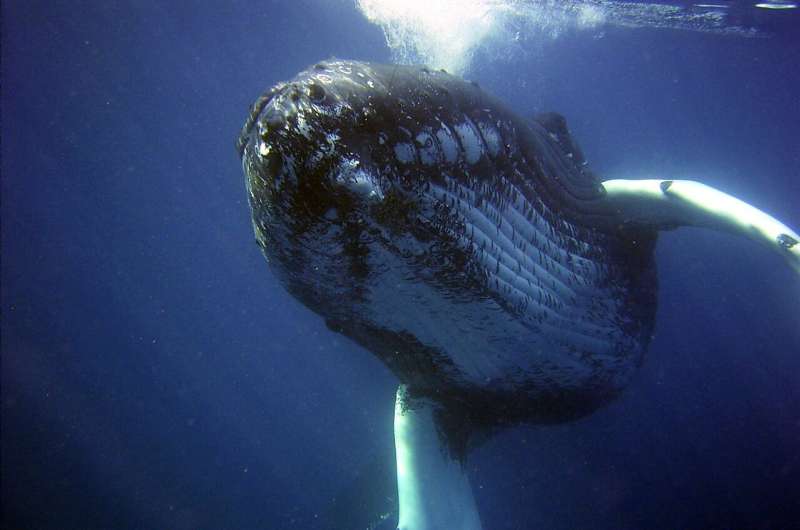Another season of highs and lows as 2024 Australian humpback migration ends

Each year, the annual humpback whale migration up and down the East Australian Coastline brings with it a multitude of highs and lows for marine scientists such as Griffith University whale expert, Dr. Olaf Meynecke.
While some scenarios Dr. Meynecke observed during the 2024 April-November migration reflected positive signs of a species back from the brink of extinction, there was also major causes for concern.
"It's really disheartening to see fatigued whales dragging nets and fishing lines along the migration, or watching a new mother stuck in shark nets with her newborn in tow," he said.
"We see this year after year and wonder when we'll begin to see less of it.
"But that's not to say it was all negatives; to further our understanding of humpback migration behavior and patterns, it was really amazing to deploy 10 whale tags for tracking, witness competitive pods in action, and also to collect whale poo, which is a rare bonus for us researchers, especially on the Gold Coast."
Dr. Meynecke, who leads the Whales and Climate Program, said he expects to see similar conditions and incidents during the next year if no changes are made to policy informing shark net and fishing line placements.
Highlights:
- Dr. Meynecke deployed 10 tags on humpback whales, recording underwater movements, behavior and habitat use
- Highest number of disentangled whales on record, with at least 15 whales disentangled from fishing gear along the east coast of Australia this season and more than 40 reported in ropes and lines
- Many competitive pods of whales reported from the Gold Coast (vision from above and below)
- More than 200 volunteers visually surveyed whales in the south-east Qld as part of the annual whale surveys undertaken by Humpbacks & High-rises
- Whale poo was collected, which is a rare occurrence in Gold Coast waters. Analyzing whale poo helps to understand its contribution to ocean fertilization
- The Gold Coast is now home to its highest ever number of whale watch operators.
Low lights:
- At least four whales were caught in shark nets on the Gold Coast and five on the Sunshine Coast (Dr. Meynecke has drone footage of the Bilinga entanglement)
- More than 40 whales reported entangled in fishing gear on the east coast of Australia
- Multiple strandings of calves, in particular on Kgari
- Strandings of deceased whales at Hervey Bay, Sunshine Coast, Moreton Bay and northern NSW
- Many whales were observed with skin conditions at the start of season
- Lower number of calving compared to last year, suggesting last summer's feeding was not ideal
- A boat struck a whale on the Gold Coast with one person injured.
Provided by Griffith University



















